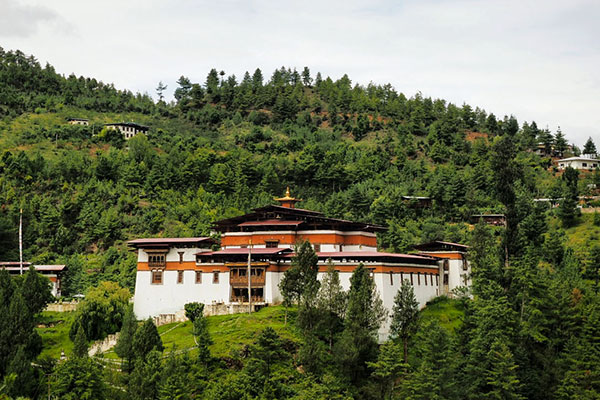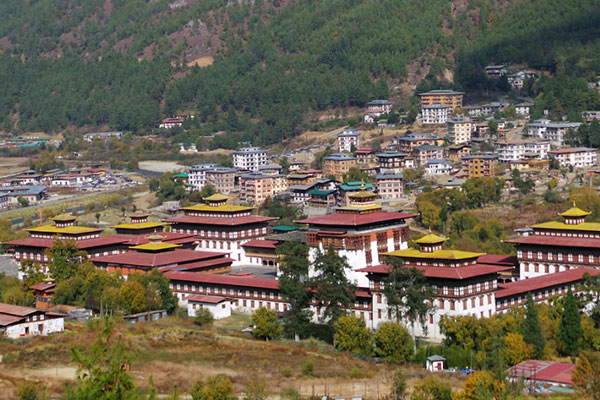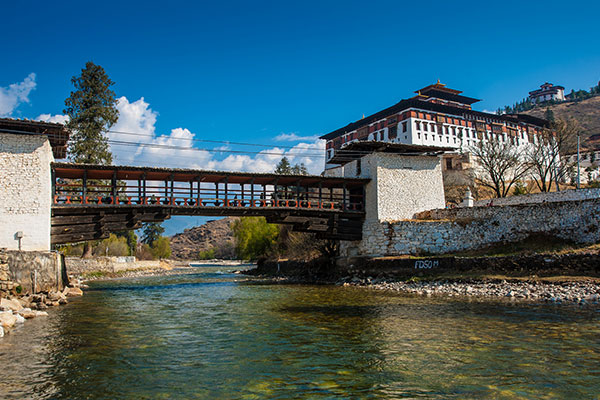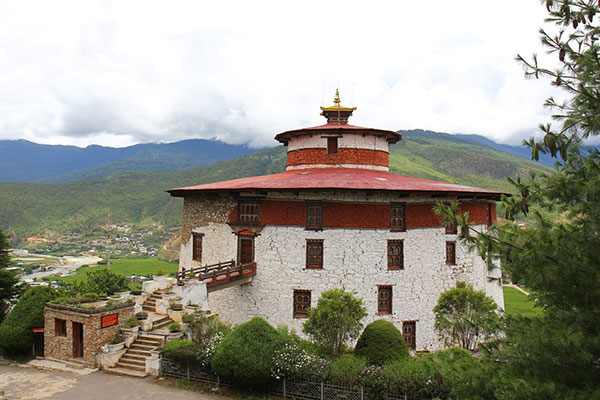Dzongs
Home / Simtokha Dzong
Dzongs
Dzongs are imposing fortress-monasteries found throughout Bhutan, serving both religious and administrative functions. The term “dzong” literally means “fortress” in the Dzongkha language, and these structures are central to Bhutanese culture and history. Traditionally, dzongs were built on hilltops or strategically significant locations to provide protection against invasions, but today they are key symbols of Bhutan’s heritage, blending architectural grandeur with spiritual significance.
Each dzong is a complex of buildings that houses monks, administrative offices, and other facilities for religious and governmental purposes. The architecture of dzongs is distinct, characterized by massive walls, intricate woodwork, and courtyards, with whitewashed exteriors and golden roofs. The design emphasizes the integration of nature and the environment, often incorporating surrounding landscapes into the layout of the structure. These fortresses typically have a central temple for worship, surrounded by buildings that serve as quarters for monks and government offices.
Historically, dzongs were the administrative and religious centers of the region, with the dual role of military defense and spiritual governance. Today, they remain central to Bhutan’s political system and are important pilgrimage sites. Notable dzongs include the Tashichho Dzong in Thimphu, the Punakha Dzong, and the Paro Dzong, each of which plays a vital role in the country’s cultural, political, and religious life.
Visitors to Bhutan are often drawn to the dzongs for their architectural beauty, historical significance, and the spiritual atmosphere that surrounds them. The dzongs continue to be a testament to Bhutan’s rich history and commitment to preserving its traditions.
Simtokha Dzong
Zhabdrung Ngawang Namgyal had built the Simtokha Dzong which is located about 5 km south of Thimphu in a chill atmospheric region. The monastery was…
Learn MoreTashichho Dzong
The Thimphu Dzong is located on the west bank of river Wang Chhu which lies exactly on the north of the city. Lama Gyalwa Lhanangpa…
Learn MoreRinpung Dzong
The Rinpung monastery was built on the order of Zhabdrung Ngawang Namgyal in the year 1644. The underlying meaning of Rinpung is “the fortress of…
Learn MoreNational Museum
The Ta Dzong was built in 1649 to protect the undefended dzong and renovated to the National Museum of Bhutan in 1968. It was built…
Learn More



